When first introduced to the game of chess, we start by learning the basic rules before moving on to learning opening principles, tactics, and complex strategies. The piece values and how they move should be second nature before you study more in-depth chess openings for Black. Later, you can learn the long-term strategy that each one offers.
And even when you already know the rules and basic tactical patterns, your first step for opening theory should be basic opening principles instead of any specific chess openings for Black that you memorize out of context. The basic principles are:
- Develop all your pieces but avoid moving any piece twice in the opening
- Aim to have strong control of the center
- Castle early to protect your king
Once you understand these basics, then you can fit the chess openings for Black into a larger theory/framework in which you will understand how the opening supports proper piece development. Memorizing the moves and variations of an opening also save you in fast-paced timed games where you do not want to waste time in the opening stage.
So if you feel ready to dive into the specifics of chess openings for Black, keep reading to learn how some of the most popular ones begin.
Skip Ahead To:
Check out some of the most popular Black openings by skipping directly to them:
You might also like: How To Castle and Why
Common Questions About Chess Openings for Black
Let’s first answer some common questions about Black openings.
What is the best opening for Black chess?
The Sicilian Defense—along with its variations of Dragon, Najdorf, Scheveningen, and Classical—is one of the most direct ways Black can challenge White’s initial advantage.
What opening does Magnus Carlsen use on Black?
Magnus tends to play e5 openings against an e4 move from White and pushes for the closed variations of the Ruy Lopez. Magnus also uses the Berlin Defense.
Why is Black a disadvantage in chess?
The disadvantage that Black has in chess comes from the fact that White moves first. By moving first, White has tempo and can force Black to continually respond to its moves.
You might also like: Chess for Beginners: Learn to Play Chess
Memorizing the moves and variations of an opening also save you in fast-paced timed games where you do not want to waste time in the opening stage.
Best Chess Openings for Black

Below you will find the basic starting positions for the most popular Black chess openings, along with what strategy they bring into the middle game.
1. The French Defense
The French Defense is a safe way for Black to develop its pieces in a compact fashion that leaves White with fewer attacking chances. The opening is characterized by an e4-e6 pawn opening, with many variations branching from there.
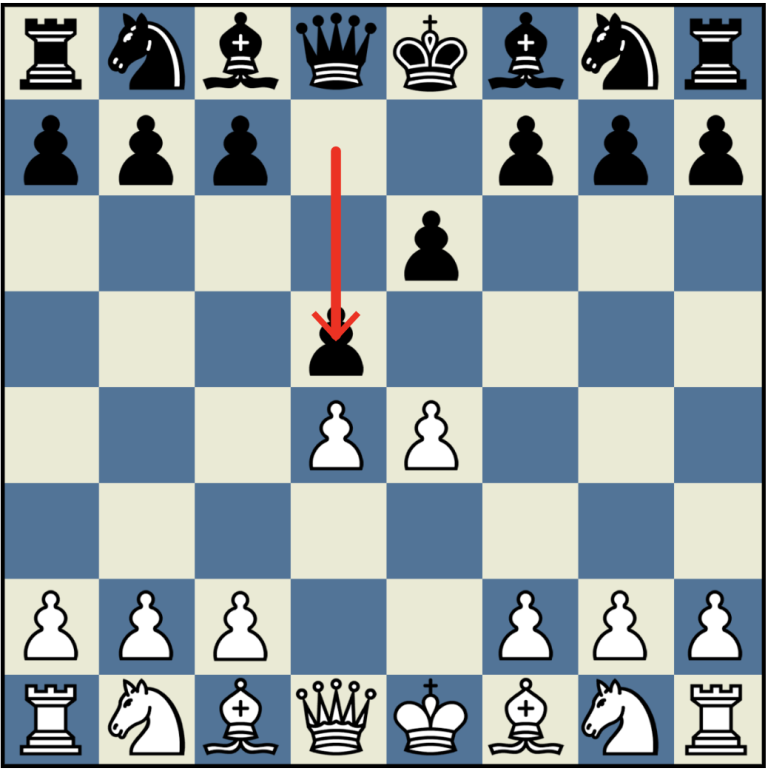
2. The Queen’s Gambit Declined
Declining the Queen’s Gambit is a response Black can make to White’s opening choice as follows:
- d4 d5
- c4 e6
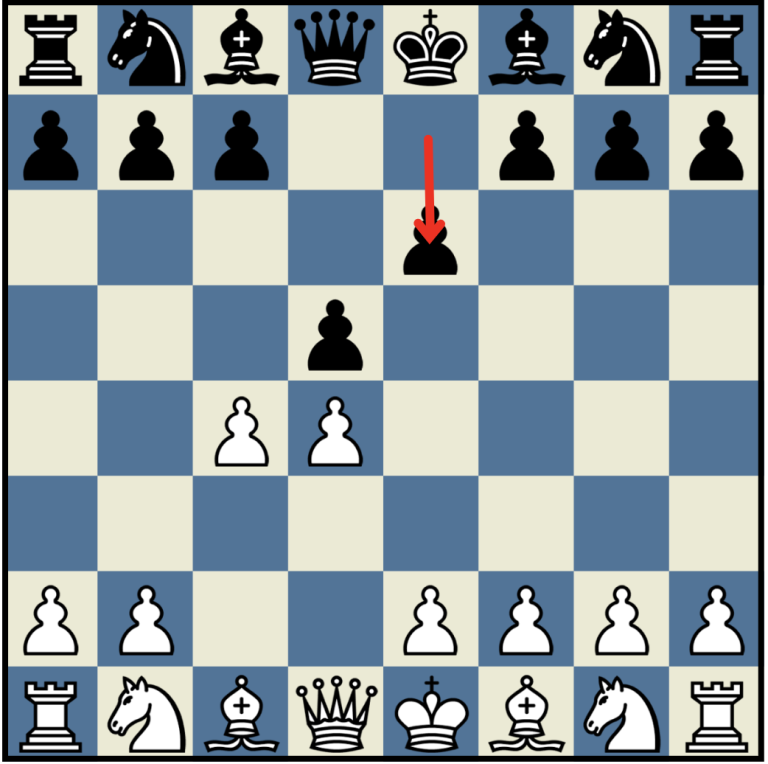
Credit: Simplify Chess
The idea of the Queen’s Gambit for White is to temporarily sacrifice a pawn to ruin Black’s central control, and declining this gambit keeps a strong central position for Black.
3. Caro-Kann Defense
The Caro-Kann Defense begins with c6 in response to e4 and branches into multiple variations from there. It’s a very solid opening preferred by many over the French because the light-squared bishop oftentimes gets developed right away rather than being stuck behind your pawn chain.
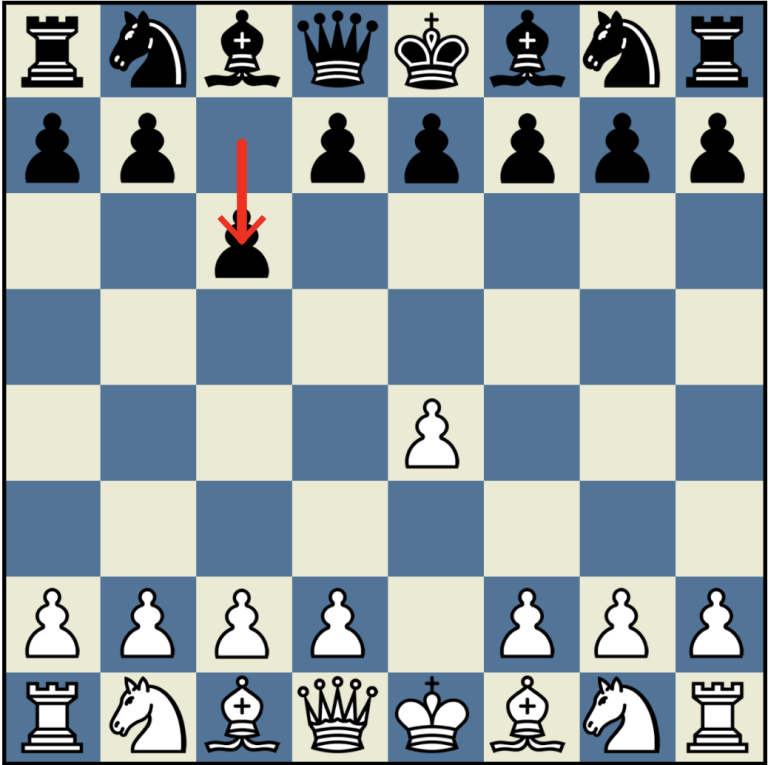
Credit: Simplify Chess
4. The Double King’s Pawn Game
The Double King’s Pawn Game, as it sounds, opens with:
- e4 c6
As Black, you will need to study the variations of this opening to continue playing well, but this general response is fantastic for beginners.
5. Pirc Defense
Pirc Defense starts with d6 in response to e4 from White. The common plan is then to attack the center with either c5 or e5. Depending on how White chooses to react, this opening can lead to dynamic attacking positions for both sides.

Credit: Simplify Chess
6. Sicilian Defense
The Sicilian Defense has many variations that are worth studying, but the lines begin with a c5 response to a King’s Pawn Opening. This opening is one of the most popular chess openings for Black, and the goal is to create an imbalanced position with a ton of space on the queenside.

Credit: Simplify Chess
7. Dutch Defense
The Dutch Defense resembles a reverse Sicilian opening as it responds to d4 with f4. However, the positions that arise here are much more dangerous for the Black king. Black can choose between playing Leningrad (d6 and kingside fianchetto), Stonewall (c6-d5-e6-f5 pawn structure), and Classical Dutch (d6-e6-f5 pawn structure).
8. Alekhine Defense
After a King’s Pawn opening from White, the Alekhine Defense responds with a knight to f6, and usually follows this line:
- e4 Nf6
- e5 Nd5
- d4 d6
Your knight might face attacks from White’s pawn, but the goal is to continually attack White’s center and take advantage of its overextended central pawns.

Credit: Chess.com
9. The Slav Defense
The Slav Defense occurs in the following sequence:
- d4 d5
- c4 c6
This defense is another way to decline White’s Queen’s Gambit opening, and the goal is to better develop the bishop on c8.
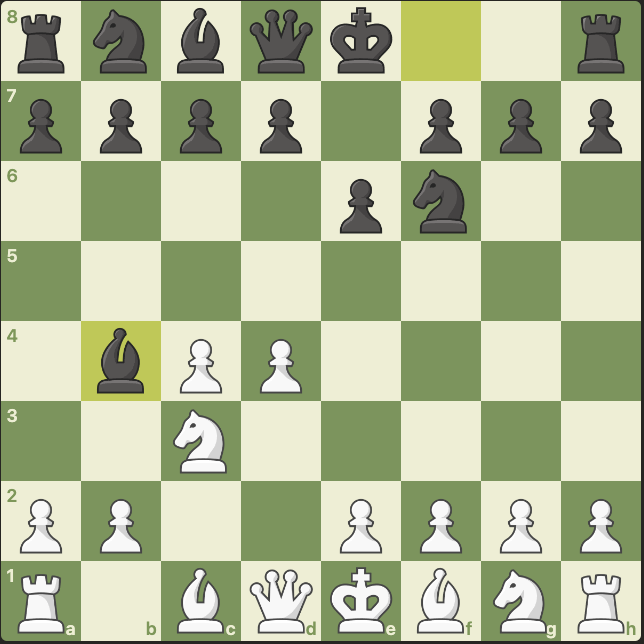
Credit: Chess.com
10. The Nimzo-Indian Defense
You can find the Nimzo-Indian Defense position in a variety of orders, but it usually occurs with the following moves:
- d4 Nf6
- c4 e6
- Nc3 Bb4
This position is all about building tension on the e4 square by pinning the knight, and you will even give up the bishop pair for this strategy.
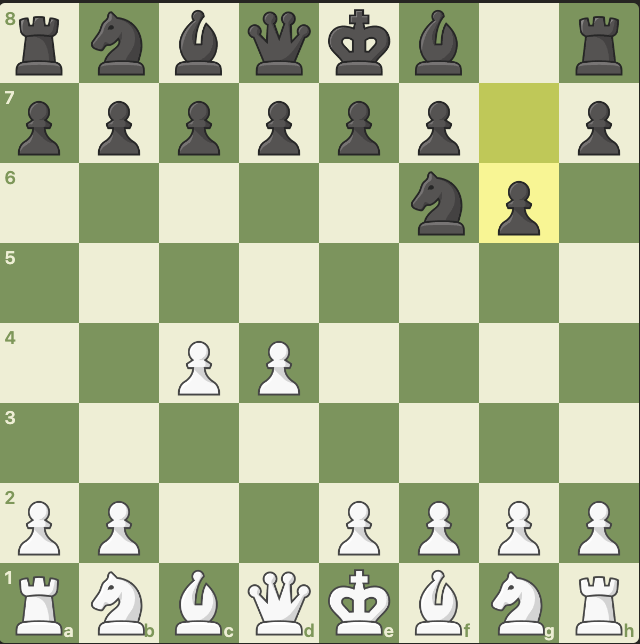
Credit: Chess.com
11. The King’s Indian Defense
The King’s Indian Defense has a position that you can find with many variations, but it usually progresses as follows:
- d4 Nf6
- c4 g6
The goal is to fianchetto your kingside bishop and protect the king while controlling the center from afar.
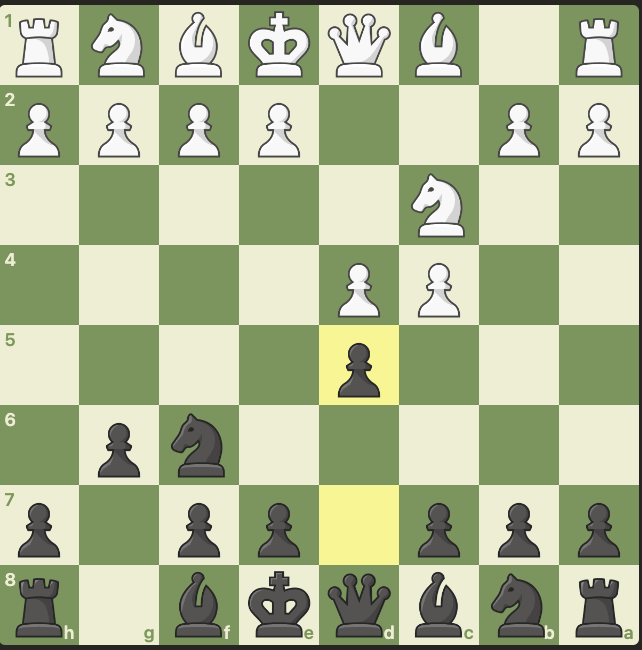
Credit: Chess.com
12. Grunfeld Defense
At first, the Grunfeld Defense appears to be a King’s Indıan Defense, but it reveals itself with the following:
- d4 Nf6
- c4 g6
- Nc3 d5
That pawn to d5 move challenges White’s center and forces them to respond to Black’s tempo.
13. The Budapest Gambit
The Budapest Gambit opens with the following moves:
- d4 Nf6
- c4 e5
The surprising move is the pawn to e5, and the goal is to sacrifice a pawn in exchange for tempo, continually putting pressure on White’s e5 pawn.
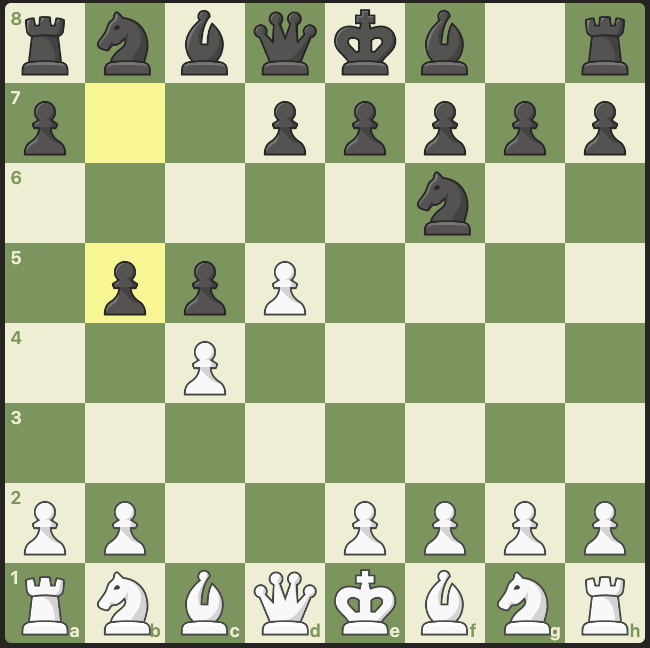
Credit: Chess.com
14. Benko Gambit
The Benko Gambit occurs with the following opening moves:
- d4 Nf6
- c4 c5
- d5 b5
Black is purposefully ready to sacrifice the b5 pawn to gain better control of the queenside. Be prepared for lines where White declines this gambit.
Credit: Chess.com
15. The Queen’s Gambit Accepted
Another option to White’s Queen’s Gambit opening—besides the Slav Defense and Queen’s Gambit Declined—is to accept the gambit by taking the c4 pawn:
- d4 d5
- c4 dxc4
Black’s goal is to play carefully and eventually challenge White’s center with a pawn to c5 move.
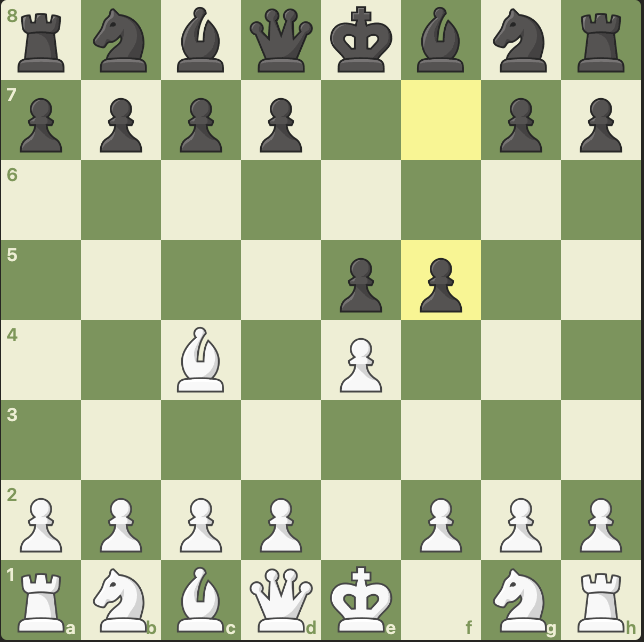
Credit: Chess.com
16. Calabrese Counter Gambit
The Calabrese Counter Gambit is a response to White playing an Italian opening and has the following sequence:
- e4 e5
- Bc4 f5
Your goal is to sacrifice a pawn to better control the center and ruin the plans White had with its Italian strategy.
Final Thoughts
As you can see, playing Black leaves you with a ton of responses to White openings and lots of strategies to regain the tempo that White starts the game with. Hopefully, you now feel way more confident trying out a range of chess openings for Black!
Related Articles
Remember to check out our other chess content to keep your game developing:
Top Chess Courses
Meet Amphy
The largest marketplace for live
classes, connecting and enriching
humanity through knowledge.
Related Articles

